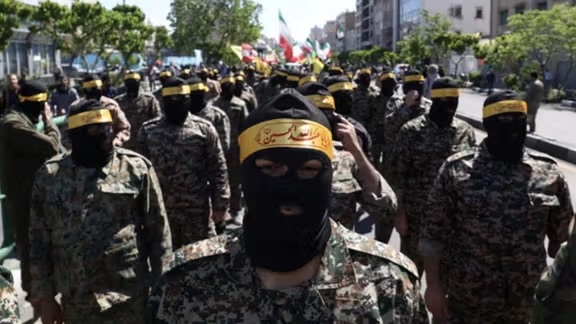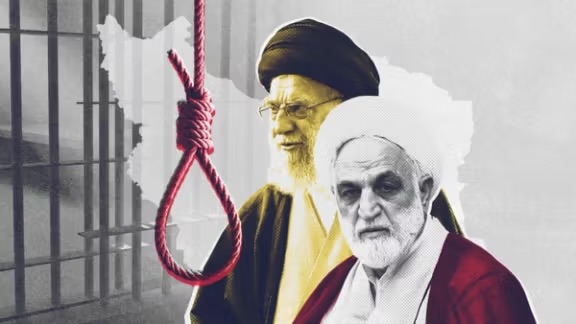
The Arab Ahwaz faces significant educational challenges, with schools suffering from poor infrastructure, low-quality education, and a shortage of teaching staff. Additionally, Arab students are required to be educated in Persian, depriving them of learning in their native language. These policies violate international laws that guarantee the right of people to education in their mother tongue. As these challenges escalate, grassroots initiatives have emerged to preserve the Arabic language through self-education within families, Quran memorization, and awareness campaigns aimed at reinforcing Arabic language retention.
Educational Challenges in Ahwaz:
1. Poor School Infrastructure:
• Ahwaz schools face a severe lack of adequate infrastructure. Some schools consist of dilapidated buildings and lack essential facilities like restrooms and libraries. Furthermore, they lack proper ventilation and cooling systems, making the school environment unsuitable for learning, especially under harsh climatic conditions.
2. Shortage of Teachers and Educational Resources:
• Schools in Ahwaz suffer from an insufficient number of qualified teachers, and students lack essential educational resources such as textbooks and learning materials. This results in lower academic achievement, high failure rates, and increased dropout rates.
3. Imposition of Persian Language and Ban on Mother Tongue Education:
• Persian is imposed as the sole language of instruction on Ahwazi students, preventing them from learning in their native Arabic. This impacts their ability to comprehend the curriculum and makes the educational process more difficult.
4. Lack of Cooling and Insufficient Facilities:
• In the face of high temperatures in Ahwaz, schools lack proper cooling facilities, negatively affecting the learning environment and leading to a decline in students’ academic performance.
International Laws Related to the Right to Education in the Mother Tongue:
1. The Universal Declaration of Human Rights (1948):
• Article 26 ensures the right to education, including respect for individuals’ cultural and linguistic identity, thus supporting the right to education in one’s native language.
2. The Convention on the Rights of the Child (1989):
• Article 29 focuses on children’s right to learn in their native language, a convention Iran has ratified but violates in Ahwaz.
3. UNESCO Convention Against Discrimination in Education (1960):
• This convention commits to prohibiting discrimination in education, including linguistic discrimination, and stresses the need to provide equal education for all children.
Ways to Preserve the Arabic Language in Ahwaz:
1. Self-Education Within the Family:
• Families play a crucial role in preserving the Arabic language in Ahwaz. Through homeschooling, parents can teach children to read and write in Arabic, reinforcing the use of the native language in daily life. Parents should encourage the practice of Arabic in speaking, reading, and writing at home to help children master their mother tongue and communicate naturally.
2. Quran Memorization:
• Memorizing the Quran is an effective tool for preserving Arabic among Ahwazi children. Since the Quran is written in classical Arabic, teaching it to children enhances their understanding and grasp of their native language. Local mosques and Islamic centers can contribute by organizing Quran memorization circles and offering Arabic language courses as part of religious instruction.
3. Awareness Campaigns to Promote Arabic Language Retention:
• Organizing awareness campaigns that encourage adherence to Arabic plays a vital role in raising awareness among Ahwazis about the necessity of preserving their language. These campaigns may include:
• Workshops and lectures on the importance of Arabic and its role in cultural identity preservation.
• Using social media to share educational materials and awareness videos in both Arabic and Ahwazi dialects to encourage families and youth to maintain their mother tongue.
• Hosting cultural events such as Arabic poetry, plays, and celebrations that focus on the Arabic language and Arab heritage.
4. Establishing Independent Libraries and Educational Platforms:
• Local communities in Ahwaz can establish libraries or online platforms that provide Arabic books and educational resources for children and youth. These libraries could be mobile or internet-based to compensate for the severe shortage of books and learning materials provided by the Iranian government.
5. Creating Study and Self-Learning Groups:
• Ahwazi families and communities can form small study groups where children and students learn Arabic together, independently from government interference. These groups can include volunteers and older learners who teach Arabic in an informal but effective manner.
Social and Cultural Implications of Education Policies:
• Imposing Persian as the language of instruction and denying Ahwazi children the right to learn in their mother tongue leads to the loss of cultural identity and increased social marginalization. Education in an unfamiliar language limits children’s ability to engage socially and academically, leading to a sense of cultural isolation.
• Retaining the Arabic language through self-driven methods can reinforce cultural identity and restore confidence within the Ahwazi community, helping them confront the marginalization imposed upon them.
Conclusion:
Education in Ahwaz suffers from multiple issues, including a lack of infrastructure, teachers, and the imposition of the Persian language. Despite these challenges, families and communities play a vital role in preserving the Arabic language through self-education, Quran memorization, and awareness campaigns. The international community and human rights organizations should pressure the Iranian authorities to adhere to international laws that guarantee the right to education in native languages.





